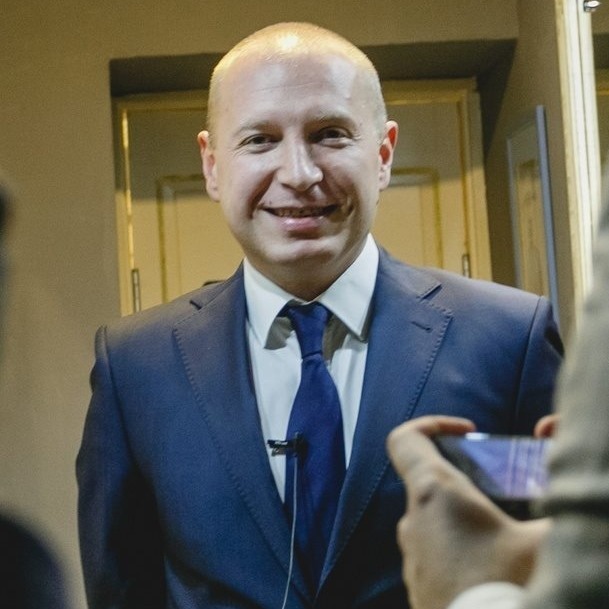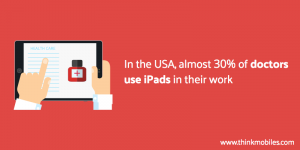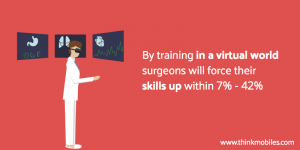Every year information technology is firmly embedded in all spheres of human activity. Virtual reality in medicine, in all its forms, is a great supplement to this branch. Treating, modeling, training, simulation – these are four components that make the essence of virtual reality and bring it to the point of discussion and problem-solution. Virtual reality in medicine, healthcare apps, general problems of modern medicine, that is what this article is about.
General problems of medicine.The problem of remote treatment
Let us look at these two notions: virtual reality and remote treatment. Can we call them interchangeable? Probably no. Complementary? It is presupposed to be yes. Thus, let it be our first subject of discussion.
The problem of the location of the patient, the problem of the remote support, and the problem of putting the right diagnosis, that is supposed to be the point.
Currently, it has become possible to make an appointment with the patient directly and to obtain the scanned copies of the results of the examination immediately just in the hospital. Suppose a person lives in Australia and a well-qualified specialist lives in the Netherlands. A long distance separates a doctor and a patient from the process of treatment. How to find a perfect solution?
Nowadays, in the field of medicine, the global market of healthcare applications for smartphones, tablets and computers counts almost 20 000 offers. It has been proved, that in the near future, iPhone and iWatch will render the doctors possibility of diagnostic the level of sugar in the blood, respiration rate, exercise heart rates and the level of dehydration. Even an app that will help to imitate the surgical interventions thereby, trying to solve the problem of the remote surgery, it will a great novelty in the sphere of medicine.
Healthcare applications have already been used for diagnosis.
The problem-solution of remote patient support, prophylaxis, diagnosis, cure, and rehabilitation could have lessened the acuity of the problem of delivery qualitative medical service, to some extent, especially, in the condition of a high deficit of medical staff and the decrease of its qualification. Probably, the solution lies in developing some medical assistance application.
Let's Build Your VR app
Provide us with your contact details and we will contact you today
Thank you for feedback.
Now, it has become presumable that one of the catalysts means of support the patient could become surgery with the application of virtual tools.
It would be great to develop a virtual reality application, which will define the tomography, better perception of three dimensional world, the app that can measure the level of sugar in blood, respiration rate or even to accurately take the blood pressure, smart systems of the integration of the patients symptoms, case history, and genomics to secure healthcare at a long distance.
Imagine healthcare application that enables you to receive in high-quality tomographic images, three-dimensional data of X-ray machines, ultrasonic scanning. Wouldn’t it help you to give a presumptive diagnosis or consultation, instantly, without the matter of presence of the patient. The ability of this medical assistance application to use the extended specter of received data about the patient will also give the possibility to get an effective solution to find a specialist at a remote location.
By remotely assessing the physiological parameters of the patient such as cardiac contractions, or blood pressure would help to gain even a perfect remote consultation for the further process of treatment. This approach of online-monitoring would provide the support to transfer the data and the information about the patient’s state. The inquiry of the patient, his examination would be a nice supplement for the remote treatment.
Suppose you happen to be in a situation when there is a high need to get a consultation from a qualified doctor and he is the only one to give an accurate diagnosis. There is no possibility to reach that destination, and it happens for you to have an iPhone or iPad. What do you think? Would it be better to have an application which can render all your medical reports a doctor needs in digital format?
If a doctor wants to know blood pressure he will get it and will analyze, cardiac contractions, an X-ray- everything is at doctor’s disposal.
Such healthcare technology would help make the problems solved:
- The problem of the immediate need to take medical and organizational solutions in the shortest possible terms.
- It could enable the rapidness of the settlement of various decisions
- This will allow the medicine of the developed countries to be available to remote corners of the planet.
Exactly, the use of remote recording and transmission of physiological parameters, real-time monitoring, and control, online-consultation of the patients would allow shifting the medicine on the new level, making available around-the-clock medical online consultation, preventive dynamic monitoring of patient’s state, control and immediate adjustment human’s body.
Virtual Reality in Medicine. The problem of training
Medical training is a promising use of virtual reality in medicine. Despite many healthcare technology jumps, surgical training has remained more or less unchanged for more than a century. In training, surgeons have always had to gain operative experience through “supervised trial and error” on real patients. This approach makes surgical training completely dependent on the actual case-load, prolongs surgical training, and compromises patients’ safety. Thus, surgeons, this column is supposed to be for you.
Every surgeon wishes, there was a visual patient, with whom he can do whatever wants. A great example: a student or a surgeon comes into a virtual room and starts operating on a virtual patient. A beginner surgeon starts working out all the skills steadily, which further will allow him to avoid the critical outcomes.
Virtual reality in medicine would help surgeons acquire all surgical skills by means of simulation of all operations and to better investigate each organ of the human body. Surgeons can use medical assistance applications to practice operations on 3-dimensional, virtual-reality visual simulations and soft-tissue models that recreate the textures of human tissues through force feedback. Image-guided simulations would allow surgeons to practice procedures on 3-dimensional reconstructions of the anatomy of the actual patients, whom they plan to operate on the next day. In all of these simulations, trainees can be guided through telemonitoring.
In many hospitals and universities, still, the use of the old healthcare technology and equipment of the 80s, which gives the two-dimensional image of the affected organ, does not allow a surgeon to assess it in full. All this makes it difficult to diagnose the disease and to establish the accurate diagnosis. Injured organ, part of the body or the fetus now could appear in the form of a three-dimensional object, allowing the doctor to evaluate it from all its sides.
Probably you have met other difficulties in teaching various surgical skills, in cost reduction and in a frequency of medical errors. Perhaps, you have the need in the rapid training of a large number of medical personnel. Yes, a big true, because the last results of investigation state that the absence of professional development is a huge hazard area from the point of view of disappointment for medical staff. The problem of the development of tactile skills of medical personnel in the interaction with the holographic images.
Virtual reality in medicine finds many new applications, and they have recently come to assist doctors, allowing to look inside the patient.
We must keep it in mind, that one of the biggest advantages of virtual reality is the safest environment.
Has virtual reality in medicine found the problem-solution?
Medical assistance application that will strengthen the accuracy of clinical diagnosis with the help of the methods of depicting and visualization of medical data.
It would help them develop more accurate surgical plans in 40 % less time. Surgeons would become more involved in treatment planning by taking their understanding of the disease and preparing the data sets for the surgeon. Students will acquire knowledge and gain the understanding of the human body by means of interaction within the virtual environment. Medical students can perform ‘hands-on’ procedures but in a safe and controlled setting. They are able to make mistakes – and learn from them but in an environment where there is no risk to the patient. They interact with a virtual patient and as a result of this, learn skills which they can then apply in the real world.
The suggested solution of avoidance of medical errors comes to develop virtual reality application, where there will be a virtual human who will be depicted with all its internals, with all its parts of the body: heart, kidneys, liver, bones, arterial. The application provides a user to have all surgical instruments. The practical surgeon is immersed in a virtual world and starts operating a virtual patient. What it can lead to? What surgical problems it would help to solve?
So, an unexpected situation has happened, a young doctor has been given a task to operate on the patient. Let it be his first operation. He is frustrated, so he spent hours to practice and rehearse the operation, several times until he feels confident. The next time, he goes into the operation fully prepared.
Learning curve, allowing trainers to acquire surgical skills in a short time while improving patients safety by reducing surgical errors, that is probably the point you are looking for.
Ultimately, these healthcare applications will be integral to the training and licensing of surgeons and will provide objective means for assessment of surgical skills.
It would help to play the whole process of operation, see the most problematic places observed. Now let us replay it once again and think of these benefits, so as to convince if they are worth paying attention to.
- A surgeon acquires skills, by steady repeating the operation several times
- A surgeon becomes well-prepared for the unexpected situations, which in a real world would be easy to cope with
- It would lower the frequency of medical errors
- It will solve the need for rapid training of a large number of medical personnel
Just look at these numbers and make your own conclusion. The latest investigations have shown that the effectiveness of the transference of the skills from the trainer of virtual reality on the practical surgery is 26-42 % for unpracticed surgeons and 7-32% for experienced surgeons. Investigations state that the greatest changes in the training on in the virtual world are the decrease of medical mistakes, and the decrease of the time spent on the operation.
Because the quality depends highly on the educational skills of the experienced doctor. Because each patient wishes there was a doctor who has rehearsed the operation many times.
Virtual reality allows us to use, in a full measure, what a person receives: 80 % of information from the outside world with the help of vision, at that, people remember only 20 % of what they see, 40 % of what they see and hear, and 70 % of what they see, hear and do.
A virtual patient would be shown as an interactive set of the attributes and symptoms, which further allow undergoing the whole cycle of education and training on that or another problem.
Another reason to use virtual reality in medicine is the expensiveness of surgical training or cost reduction.
Surgical training is expensive, and the pressures from shortened training programs and reduced working hours for trainees demand that an increasing proportion of the surgical expertise of trainees has to be gained outside the operating theater. The crucial factor that will determine the uptake of virtual reality technology by surgeons will be the demonstration that virtual reality is capable of delivering reliable and valid training and assessment systems. Recent evidence has suggested that this is the case. Not only has the virtual reality community produced experimentally validated systems for the training and assessment of surgical skills, it has done so using established techniques that are now becoming recognized as international standards.
The problem of the increased precision. The sensation of depth-reviewing
Currently, surgeons come across the problem, while fulfilling complex and advanced surgical procedures with increased precision of a minimally invasive approach. Because of the 2-dimensional image obtained through the laparoscopic camera, prevents him from settling the matter. Yes, today, it has become possible to cope with the problem by using robotic surgery. But still, what application of virtual reality in medicine can be suggested. As it has been mentioned above, in 30 % of cases doctors use the iPads, while they are working. If a surgeon even has an iPad Pro it would be better to develop the application or VR simulation with the embedded functions, just to obtain that increase precision and the depth of review. What if you get the application which gives you that 3-dimensional view, or an app that contains the camera motion, which can be steady and conveniently controlled by you, through the voice-activated or manual master controls.
VR application would help you to improve the range of motion compared with traditional laparoscopic instruments, thus allowing you to perform more complex surgical movements
Screening the cancer
Every year the performance of screening cancer requires the performance of over 2 million video colonoscopic procedures as they are invasive and the cost for a typical colonoscopy is significant. It would be better to develop program analogous to that of virtual endoscopy, which already exists, just to develop healthcare application, that could render all the function of the above-mentioned program.
- Three-dimensional images to produce views of the organs similar to those obtained during real endoscopy.
- The availability of CT scan and MRI scan, which are used to reconstruct the organ under consideration into a 3D model.
Surgeons, having before their eyes the volumetric model of organs to be operated, might have better to plan the surgical intervention, increasing patient’s chances even in the most difficult situation.
This is a fantastic and inspiring healthcare technology because an intricate surgery such as brain tumor removal is particularly challenging to even well-trained and experienced doctors. A single, tiny mistake damaging surrounding nerves or tissues in the human brain could cause permanent and severe damage.
The problem of treatment alcoholism
Today, psychotherapists have faced the problem of treating alcoholism.
Probably, the problem lies in behavioral therapy. One of the most encountered is how to make people appear in such situations, where they can feel fear and anxiety in a safe and controlled environment and how to make them control their actions. In other words- to train their will-power.
What can be suggested make your problems solved and to simplify the process of treatment, to make it rapid and cost reduced?
It would be better to develop the methods that will be focusing on behaviors in combination with thoughts and feeling that cause them.
Imagine that you are in a bar surrounded by alcoholic beverages. There are two personas a doctor and a patient. The doctor is spectating you, by observing his actions. He can offer you a drink and to conceive your desire to accept it. He relaxes and tries to get rid of that obsession to drink and at the same time trains his strength of will, being present at a so-called virtual bar. Then, the doctor visually represents a patient the harmful and awful effects of excessive consumption of the alcohol.
What problems can the healthcare application solve?
- Eases psychotherapists therapy during the process of treatment by modeling various actions
- Enables a patient to see himself from the other side
- Cost reduction, as far as there is no need to buy different medicine
Such therapy will definitely make it easy, to manage these same situations in real life.
Making conclusions, we can state that the role of virtual reality is very significant. It provides us with the safe and flexible platforms for assessment, training, treatment, and education.The virtual world has become an important component of modern medicine. It is an environment, where believable and natural interactions are being performed. It is the world, where you can make a mistake and then draw the conclusion from it, the world, where you can replay any operation you want. All in all virtual reality in medicine is a great doctor’s assistant.
Let's Build Your VR app
Provide us with your contact details and we will contact you today
Thank you for feedback.
Read more: 25 best VR development companies



